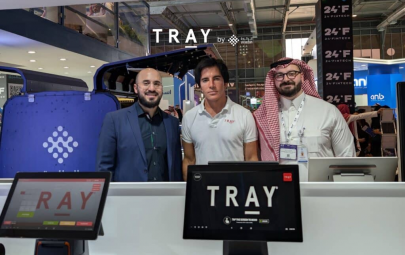.99 Problems: The True Cost of Your Point-Of-Sale System

By Peter Kellis, Founder & CEO, TRAY
When it comes to the latest debate about restaurant costs and fees, I’m reminded of the old adage: don’t step over a dollar to pick up a dime. Although in the case of point-of-sale systems, that dollar may be distracting the industry from a much more pressing challenge.
My social media feeds of late have been saturated by restaurant industry professionals discussing and debating the introduction of a 99-cent fee passed to the consumer as recently announced by a well-known point-of-sale system provider. Not to be outdone, another POS platform introduced a $1.50 consumer fee on online orders over a certain dollar amount. Some argue these new additional fees are necessary given the ever-growing cost of maintaining and constantly up-leveling restaurant technology. Some say the act of adding the guest fees is the straw that will break the camel’s back amid a pushback against fees and surcharges. How many added costs can restaurants place on consumers before there’s some kind of upheaval? How important is it to a brand to be able to control the fees a guest pays?
Those are questions worth asking. But by obsessing over the latest surcharge, there’s a more important one that gets ignored in the process: How much does a point-of-sale system truly cost restaurant operators?
As an industry that runs on tight margins and faces constant cost and labor pressures, every brand should have visibility into the true cost of what is effectively the beating heart of every restaurant. Small add-on fees may be a pittance compared to other, potentially more substantial costs that can inhibit profitability if not properly accounted for.
Beyond the 99-cent and $1.50 fees that are making headlines, these are the real areas that can make a point-of-sale system turn into a financial albatross:
- Upfront Investment: Implementing a robust POS system requires a significant upfront investment. This expenditure encompasses hardware, software licensing fees, installation costs, and staff training. Worth noting, adopting a cloud-based POS system that can be used on existing legacy hardware can save significant money. Costs vary by provider, restaurant size, location, system capabilities and more, but the initial set-up can cost anywhere from $10,000 to over $50,000 per store.
- Integration and Scalability: Down the road, what will the cost be to add in a new loyalty program or switch to a better back-of-house platform? Most POS providers will tout an “open” system but look under the hood and you can often find a network of fees you’ll have to pay AND may be hoisted on your new partner of choice. Look for POS platforms that will give you their APIs directly and will openly disclose any fees charged to you or to third parties to use the APIs.
- Training and Staff Turnover: Introducing a new POS system necessitates comprehensive training for both management and staff, and time and cost vary based on the complexity of the system. As restaurant industry employment rates remain below pre-pandemic levels and turnover remains high, simplicity in UX/UI and training is even more helpful when it comes to keeping training cost and time invested low.
- Payment Processing Fees: Everyone thinks they have a great deal on credit card processing. But if you haven’t shopped rates openly in the last two years, you likely can be doing a lot better. Many POS companies make a majority of their profits on processing – hidden fees that brands pay without really understanding the cost. Restaurant owners and operators must carefully evaluate associated fees, transaction charges, processing rates, and monthly service fees – and do so on an ongoing basis. These costs can sometimes arise almost out of the blue and significantly impact a restaurant’s bottom line, especially for high-volume establishments.
- System Downtime and Technical Support: Despite the reliability of modern POS systems, technical glitches and downtime can occur. In these situations, prompt technical support becomes indispensable. However, some POS providers charge additional fees for extended support or after-hours assistance. Evaluating the support options and associated costs is essential to ensure uninterrupted operations during critical periods. Further and if possible, select a POS that can operate in offline mode to keep the restaurant fully operational even if Web access fails.
- Data Security and Compliance: As restaurants handle sensitive customer data, maintaining robust data security measures is enormously important. POS systems should comply with industry standards to protect against data breaches. Data breaches can result in hefty fines, legal complications and reputational damage for a brand.
As the restaurant industry continues to become digitally powered, owners and operators have growing costs of adoption and implementation of technology that has practically become table stakes. While obsessing over whether a fee assessment is appropriate, the industry may be ignoring much more important costs. They should consider the actual and sometimes hidden expenses associated with a restaurant POS system so that they can make informed decisions about their technology investments. By accounting for these expenses upfront to the best of their ability, restaurant owners and operators can implement a POS system that aligns with their needs, enhances efficiency and ultimately leads to greater success in the dynamic world of the restaurant industry.
That way, before we step over that dollar, let’s make sure the industry finds much bigger rewards around the corner.
##
About Peter Kellis
As Founder & CEO, Peter is responsible for leading the company and product vision at TRAY, a leading provider of cloud-native enterprise-class POS systems. Peter holds undergraduate and graduate degrees in Electrical Engineering and Computer Science from MIT, and holds over 35 patents in data replication technologies.
Categories:



